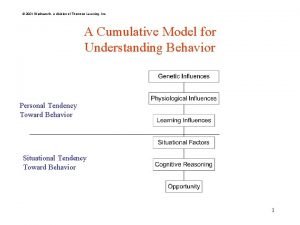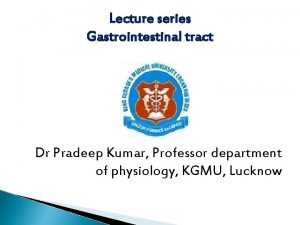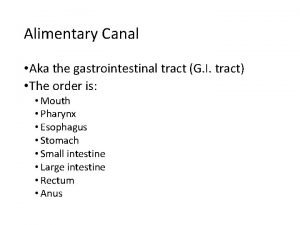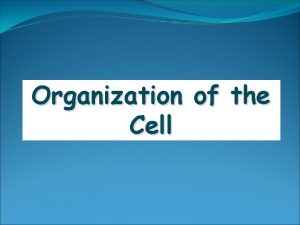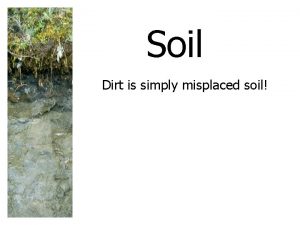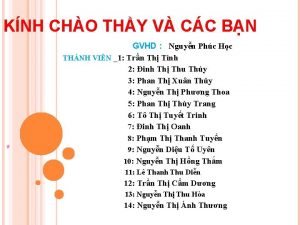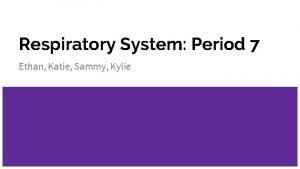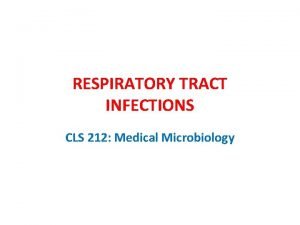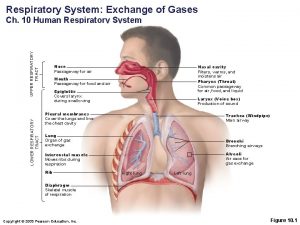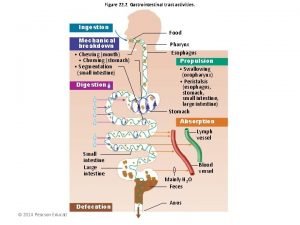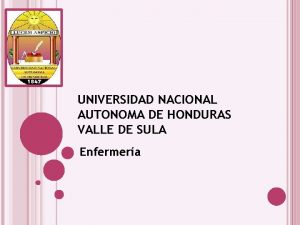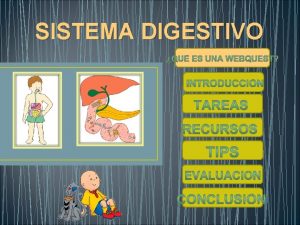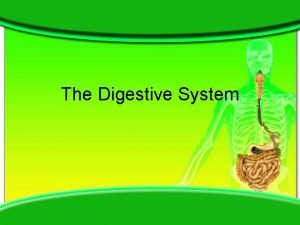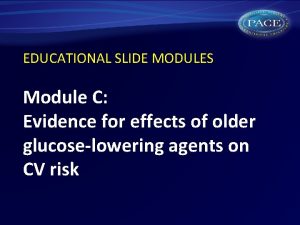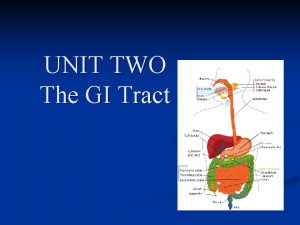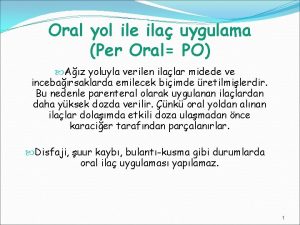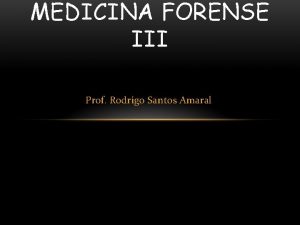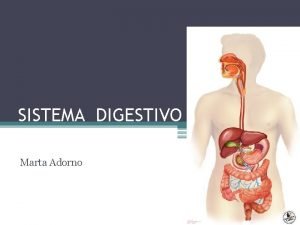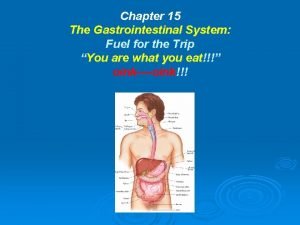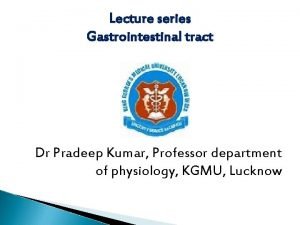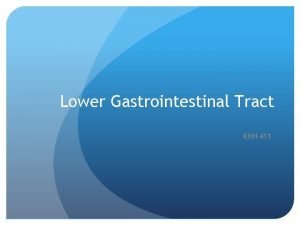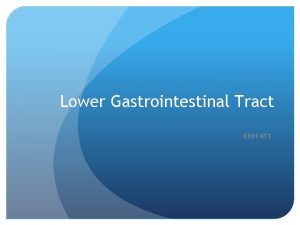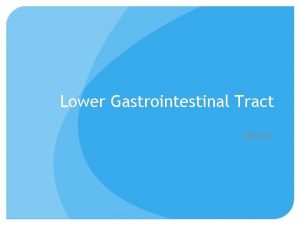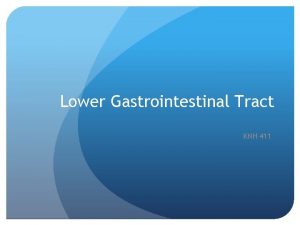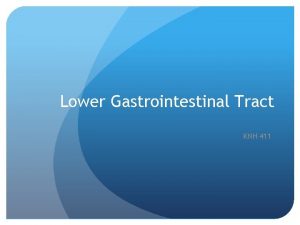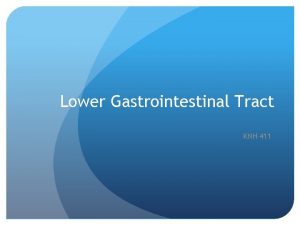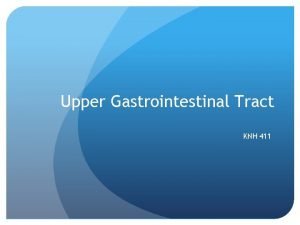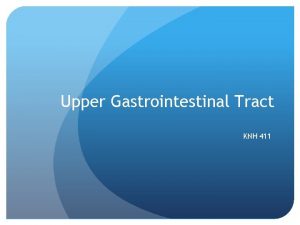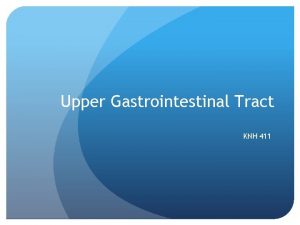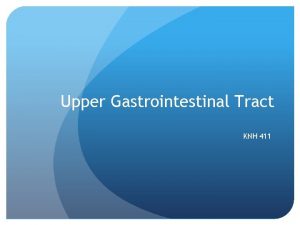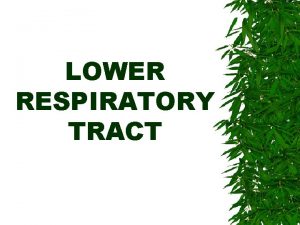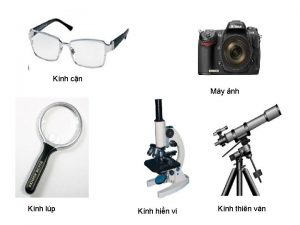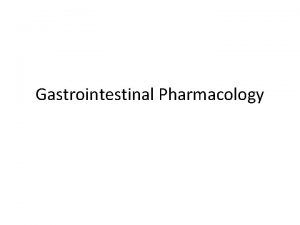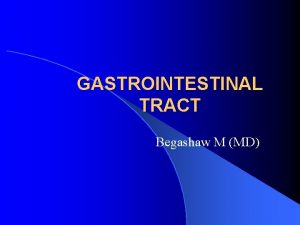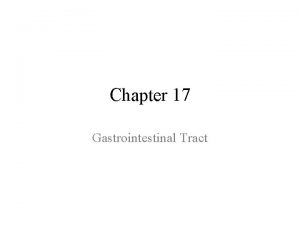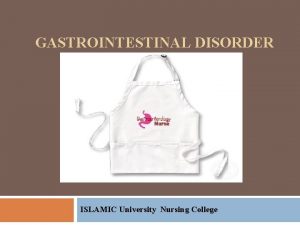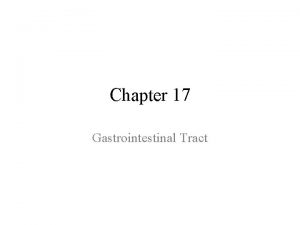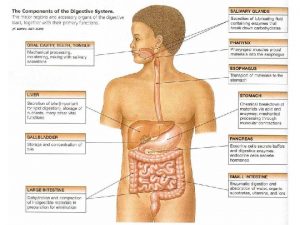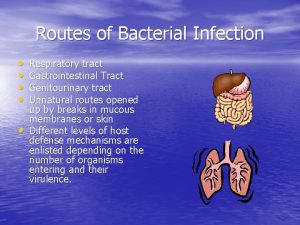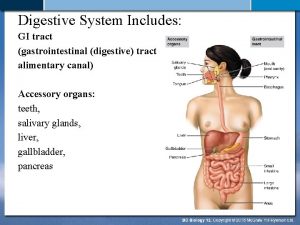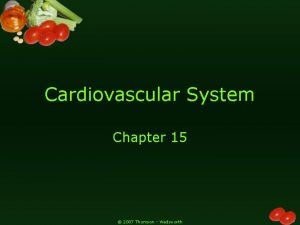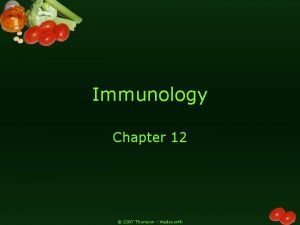Lower Gastrointestinal Tract KNH 411 2007 Thomson Wadsworth







































- Slides: 39

Lower Gastrointestinal Tract KNH 411


© 2007 Thomson - Wadsworth



Pathophysiology: Lower GI Tract Malabsorption - maldigestion of fat, CHO, Protein Celiac disease, diverticulitus, chrons disease can be casued by Decreased villious height, enzyme production Unproper working of an accessory organ (Pancrease, liver) cancer Decreased transit time

Pathophysiology: Lower GI Tract Malabsorption - fat Steatorrhea: loose lipid fatty stools Fat-soluble vitamins malabsorbed: ADEK Potential for excess oxalate: kidney stones Abdominal pain, cramping, diarrhea Dg; fecal fat test or D-xylose absorption test- to test how well the body is absorbing simple sugars (depends on the length of the compromised GI tract) or small bowel x-ray

Pathophysiology: Lower GI Tract Malabsorption - Fat – Nutrition Restrict fat 25 -50 g/day Use of MCT supplements Pancreatic enzymes

Pathophysiology: Lower GI Tract Malabsorption - CHO Lactose malabsorption Increased gas, abdominal cramping, diarrhea Restrict milk and dairy products Products such as Lactaid can be rec.

Pathophysiology: Lower GI Tract Malabsorption - protein Protein-losing enteropathy Reduced serum protein Peripheral edema Cells can not hold in the water Fluid is overloaded because your system is not holding fluid within the cells

Pathophysiology: Lower GI Tract Malabsorption - Nutrition Therapy Results in weight loss Loss of vitamins and minerals Difficencys Chronic PEM (protein Energy Malnutrition) Treat underlying disease/ nutrient being malabsorbed What nutrient is being malabsorbed and what can you do to treat that specifically

Pathophysiology: Lower GI Tract Celiac disease Damage to the intestinal mucosa Genetic and autoimmune disease Occurs when alpha-gliadin from wheat, rye, malt, barley are eaten Looking at an inflammatory state that creates antibodies Some can handle small amounts of oats New onset patients you have to rebuild and you want to start off really slow by being very easy on the gut- removing as many irritants as possible Infiltration of WBC, production of Ig. A antibodies

Pathophysiology: Lower GI Tract Celiac disease - pathophysiology Damage to villi Reduced height as well as being flattened Decreased enzyme function Maldigestion and malabsorption Occurs with other autoimmune disorders


Pathophysiology: Lower GI Tract Celiac disease - clinical manifestations Peripheral neurothopy-sense of touch Bone and join Diarrhea, abdominal pain, cramping, bloating, gas Muscle cramping, fatigue Skin rash Higher risk for lymphoma and osteoporosis

Pathophysiology: Lower GI Tract Celiac Disease - Diagnosis/Treatment/Prognosis Biopsy of small intestinal mucosa Or individuals will eliminate gluten and then follow through with a gluten free plan Reversal of symptoms following gluten-free diet Refractory CD; d/t coexisting disease

Pathophysiology: Lower GI Tract Celiac Disease - Nutrition Intervention Low-residue: to minimize diarrhea low-fat no more than 45 -50 g per day lactose-free gluten-free diet Oats are controversial maximum amount is ½ cup a day Identify hidden sources of gluten Specialty products


Pathophysiology: Lower GI Tract Irritable Bowel Syndrome (IBS) Medical diagnosis : Abdominal pain that has to have at least 2 of the following Pain relieved with defecation Onset associated with change in frequency of stool Onset associated with change in form of stool Eliminate “red flag” symptoms: Difficulty eliminating waste products

Pathophysiology: Lower GI Tract IBS Most common GI complaint Pain with defecation More common in women than men Etiology unknown Usually Increased serotonin, inflammatory response, abnormal motility, pain in these individuals Stess, anxiety, emotional trauma are all more common in these individuals

Pathophysiology: Lower GI Tract IBS - clinical manifestations Abdominal pain, alterations in bowel habits, gas, flatulence Increased sensitivity to certain foods Concurrent dg Fibromyalgia Chronic fatigue syndrome Food allergies

Pathophysiology: Lower GI Tract IBS - Treatment Guided by symptoms Antidiarrheal agents Tricyclic antidepressants, SSRIs Bulking agents, laxatives Behavioral therapies

Pathophysiology: Lower GI Tract IBS - Nutrition Therapy Can lead to nutrient deficiency, underweight, malnurited Decrease anxiety and depression Goal is to normalize dietary patterns

Pathophysiology: Lower GI Tract IBS - Nutrition Therapy Assess diet hx Assess nutritional adequacy: 24 hr recall assess what is going on with macro nutrients and micro nutrients Focus on increasing fiber intake: increase to 25 g per day Adequate fluid: to try to help with GI motility 25 cc per kcal Pre- and probiotics: trying to rebuild that gut flora and the damage that has been done from that inflammation Avoid foods that produce gas and swallowed air Eliminate use of staws



© 2007 Thomson - Wadsworth


© 2007 Thomson - Wadsworth


Pathophysiology: Lower GI Tract IBD - Nutrition Therapy Antibiotics Nutrition support TPN Malnutrition High cal high protein fiber regimen Iron, zn, mg, - can be lost with blood in stool electrolyes (Na, K, Cl) fluid loss May need to increase kcal, protein, micronutrients

Pathophysiology: Lower GI Tract IBD - Nutrition Interventions During exacerbation Enteral nurtiition TPN Insure Glutamine Intromin Supplement Assess energy needs + stress factor 1. 5 -1. 7 g per kilo protein 200 -500 extra kcal per day May need to increase protein Low-residue, lactose-free diet Small, frequent meals

Pathophysiology: Lower GI Tract IBD - Nutrition Interventions May use MCT oil Restrict gas-producing foods Increase fiber and lactose as tolerated 40 g per day Advancement of oral diet Individual basis Multivitamin Make sure they have one B 12, iron, ca, zn, mg, cu

Pathophysiology: Lower GI Tract IBD - Nutrition Interventions During remission/rehabilitation Maximize energy & protein Weight gain and physical activity Food sources of antioxidants, Omega-3 s Rebuild gut pro and prebiotics Pro- and prebiotics

Pathophysiology: Lower GI Tract Diverticulosis/diverticulitis – abnormal presence of outpockets or pouches on surface of SI or colon/inflammation of these Low fiber intake is of concern History of constpation When in inflammed state have a low fiber diet When not in an inflammed state high fiber diet Increases inflammatory response Other risks Obestiy, sedentary lifestyle, alcohol and caffeine intake and cigarette smoking


Pathophysiology: Lower GI Tract Diverticulosis/diverticulitis – pathophysiology Fecal matter trapped Creates excess pressure on the fecal wall of the colon Development of pouches Diverticulitis: possibility that they could actually burst Food stuff can get caught in there, bacteria can result Bleeding abscess, obstruction, fistula Bleeding area of that gut Perforation Surgical procedure

Pathophysiology: Lower GI Tract Diverticulosis/-itis – Treatment/ Nutrition Therapy Specific focus on fiber Pro- and prebiotic supplementation Acute Antibiotics Ossis-trying to fix gut lining before it is in crisis Itis-might need surgical intervention: associated with fever and hospitalization Trying to increase gut flora During inflammation stage –bowel rest- clear liquids

Pathophysiology: Lower GI Tract Diverticulosis/-itis – Nutrition Therapy -osis Avoid nuts, seeds, hulls? Because they are now thinking that they might not get caught in the pouches Fiber supplement: increase from 35 g to 10 to 12 g more psyllium -itis Low fiber diet Bowel rest, may need to be on clear liquids Avoid nuts, seeds, fibrous vegetables
 Wadsworth thomson learning
Wadsworth thomson learning Language
Language Thomson wadsworth
Thomson wadsworth Wadsworth thomson learning
Wadsworth thomson learning Wadsworth thomson learning
Wadsworth thomson learning Wadsworth/thomson learning
Wadsworth/thomson learning Which is not part of the alimentary canal
Which is not part of the alimentary canal Gastrointestinal tract
Gastrointestinal tract Chemotrypsinogen
Chemotrypsinogen Gastrointestinal tract
Gastrointestinal tract Extrapyramidal vs pyramidal
Extrapyramidal vs pyramidal Olivospinal tract vs tectospinal tract
Olivospinal tract vs tectospinal tract Mitochondria
Mitochondria Thomson higher education 2007
Thomson higher education 2007 Knh
Knh How the respiratory system maintains homeostasis
How the respiratory system maintains homeostasis Knh
Knh Upper respiratory tract organs
Upper respiratory tract organs Lower respiratory tract
Lower respiratory tract Upper and lower respiratory system
Upper and lower respiratory system Wadsworth cengage learning
Wadsworth cengage learning Henry wadsworth longfellow short biography
Henry wadsworth longfellow short biography Hn wadsworth
Hn wadsworth Coglab.wadsworth
Coglab.wadsworth Gastrointestinal
Gastrointestinal Motilidad gastrointestinal
Motilidad gastrointestinal Embriologia del sistema gastrointestinal
Embriologia del sistema gastrointestinal Ashraf radwan
Ashraf radwan Dr sigid djuniawan
Dr sigid djuniawan Gastrointestinal medical terminology breakdown
Gastrointestinal medical terminology breakdown Why does metformin cause diarrhea
Why does metformin cause diarrhea Upper gi bleeding management
Upper gi bleeding management Emt chapter 18 gastrointestinal and urologic emergencies
Emt chapter 18 gastrointestinal and urologic emergencies Vajinaya ilaç uygulama
Vajinaya ilaç uygulama Marca electrica de jellinek
Marca electrica de jellinek Nutrition focused physical examination
Nutrition focused physical examination Hirschsprung disease nursing management
Hirschsprung disease nursing management L
L Chapter 15 the gastrointestinal system
Chapter 15 the gastrointestinal system Intestinal villus
Intestinal villus




